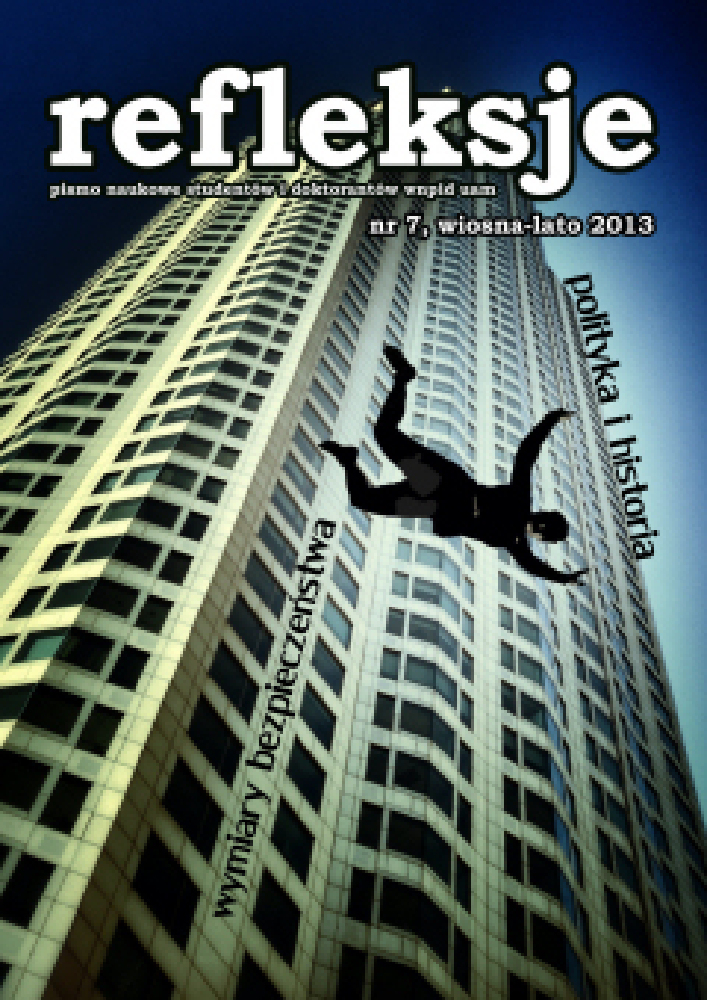Abstrakt
The conflict concerning historical events between Japan and China is now more visible than ever before – once again the disputes over Senkaku/ Diaoyu islands have awakened the ghosts of the past and undermined Japanese-Chinese bilateral relations. The major problems in the politics of memory between those two Asian countries are the rape of Nanking, the content of Japanese textbooks and officials’ visits in Yasukuni shrine. While the tensions are rising, Japan and China struggle to establish historical facts and present their interpretations to the society.Bibliografia
Beal T., Nozaki Y., Yang J. (2001), Ghosts of the past: the Japanese history textbook controversy, „New Zealand Journal of Asian Studies”, nr 3.
Bhattacharya A., Wen Jiabao’s Ice-Melting Visit to Japan, „Institute for Defence Studies and Analyses”, http://www.idsa.in/idsastrategiccomments/WenJiabaosIce-MeltingVisittoJapan_ABhattacharya_250407.
Bukh A. (2007), Japan’s history textbook debate. National identity in narratives of victimhood and victimization. „Asian Survey”, nr 47.
Chang G. G., China Now Claims Japan’s Okinawa, http://www.worldaffairsjournal.org/blog/gordon-g-chang/china-now-claims-japan%E2%80%99s-okinawa.
China’s Hu in historic Japan trip, „BBC News”, http://news.bbc.co.uk/2/hi/asiapacific/7384749.stm.
Cody E., New Anti-Japanese Protests Erupt in China, „The Washington Post”, http://www.washingtonpost.com/wp-dyn/articles/A58567-2005Apr16.html.
Futamura M. (2008), War Crimes Tribunals and Transitional Justice. The Tokyo Trial and the Nuremberg Legacy, New York.
Hiatt F., China’s selective memory, „The Washington Post” http://www.washingtonpost.com/wp-dyn/articles/A61708-2005Apr17.html.
Hook G. D. i in. (2005), Japan’s International Relations. Politics, economics and security, Londyn.
http://www.tsukurukai.com/05_rekisi_text/rekishi_English/English.pdf.
Kaczmarek P. (2012), Archipelag Senkaku. Źródło napięć na Morzu Wschodniochińskim, „Refleksje”, nr 5.
Kiro ni tatsu nicchu kankei, (2007), red. Iechika R., Matsuda Y., Dan Z., Kioto.
Koizumi shrine visit stokes anger, „BBC News”, http://news.bbc.co.uk/2/hi/4789905.stm.
Nicchū kokkō seijōka 40 shōnen kinenshikiten ga chūshi, Senkaku kokuyūka eikyō, „Asahi Shimbun”, http://www.asahi.com/world/china/news/TKY201209230122.html.
Nozaki Y. (2008), War Memory, Nationalism and Education in Postwar Japan, 1945-2007. The Japanese history textbook controversy and Ienaga Saburo’s court challenges, Londyn.
Okuyama M. (2009), The Yasukuni Shrine Problem in the East Asian Context: Religion and Politics in Modern Japan, „Politics and Religion”, nr 3.
Ono K., Abe sōsai ga Yasukuni sanpai “sōri ni nattara...” mengen sakeru, „Asahi Shimbun”, http://www.asahi.com/politics/intro/TKY201210170671.html?id1=2&id2=cabcbabi.
Qui J. (2006), The Politics of Historical Memory in China-Japan Relations, „Journal of Chinese Political Science”, nr 11.
Saki no sensō shinryaku sensō to meigen, „Asahi Shimbun” z dnia 11 sierpnia 1993.
Shōichi W. (1982), Manken kyo ni hoeta kyōkasho mondai, „Shokun!”, nr 10.
Symonds P., Koizumi’s visit to the Yasukuni shrine legitimises Japanese militarism, „World Socialist Web Site”, http://www.wsws.org/articles/2001/aug2001/japa17.shtml.
Takahashi K., Tortuous tangles over Japanese textbooks, http://www.atimes.com/atimes/Japan/FJ26Dh01. html.
Watts J., Violence flares as the Chinese rage at Japan, „The Guardian”, http://www.guardian.co.uk/world/2005/apr/17/china.japan.
Yoshida T. (2009), The making of the‘Rape of Nanking’. History and Memory in Japan, China and the United States, New York.
